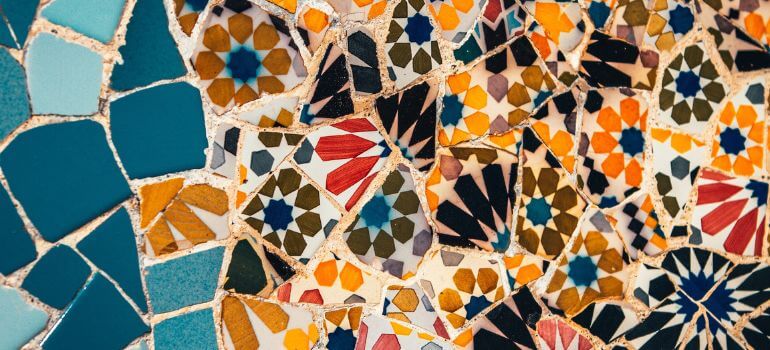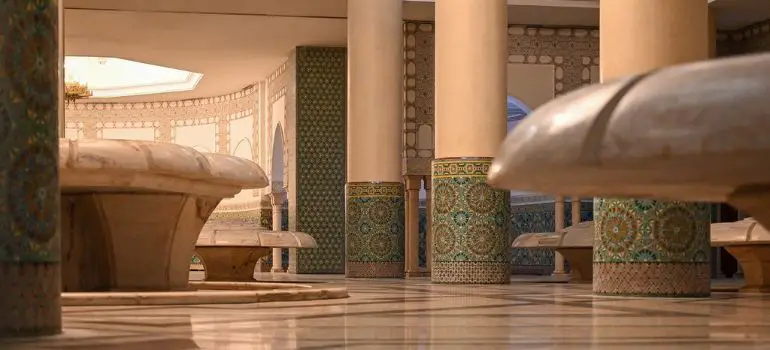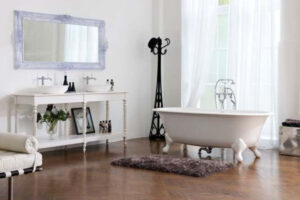Artistic expressions have evolved over the centuries, with mosaic and stained glass standing out as two captivating forms. These intricate art forms not only add aesthetic value but also tell stories of culture, history, and innovation. In this article, we’ll delve into the world of mosaic and stained glass, exploring their origins, techniques, applications, and the age-old debate of mosaic vs. stained glass.
Introduction
Art enthusiasts often find themselves torn between the timeless allure of mosaic and the mesmerizing beauty of stained glass. Both forms have played pivotal roles in various artistic movements and have left an indelible mark on architecture and interior design. Let’s embark on a journey to uncover the unique qualities that set mosaic and stained glass apart.
Mosaic Art
Definition and Origin
Mosaic, derived from the Greek word “mousaicos,” refers to the art of creating images by assembling small, colored pieces of glass, stone, or other materials. Dating back to ancient civilizations, mosaic art has adorned the walls of temples, public spaces, and private residences.
Materials Used in Mosaic
The versatility of mosaic lies in its materials – from shimmering glass tiles to natural stones like marble and granite. The artist’s choice of materials contributes to the overall texture and vibrancy of the mosaic masterpiece.
Techniques for Creating Mosaic Art

Mosaic artists employ various techniques such as the direct method, indirect method, and double indirect method. These techniques allow for intricate detailing and the creation of awe-inspiring visuals.
Stained Glass
Definition and Historical Background
Stained glass, with its roots traced back to medieval Europe, involves coloring glass with metallic salts to produce vibrant hues. Originally found in cathedrals and churches, stained glass has transcended its religious associations to become a sought-after art form.
Types of Stained Glass
Stained glass comes in various types, including opalescent, cathedral, and dalle de verre. Each type possesses unique qualities that cater to different artistic preferences and project requirements.
Traditional vs. Contemporary Stained Glass
While traditional stained glass exudes a timeless charm, contemporary artists push boundaries with innovative designs and unconventional materials. This dynamic interplay between tradition and modernity adds depth to stained glass as an art form.
Aesthetics and Design
Comparing the aesthetics of mosaic and stained glass involves examining color palettes, patterns, and visual impact. Mosaic’s intricate patterns may appeal to those seeking a detailed and dynamic display, while stained glass captivates with its luminous, light-filtering qualities.
Durability and Maintenance
Art, be it mosaic or stained glass, is not just a visual feast but also an investment in creativity and aesthetics. Understanding the durability and maintenance of these intricate pieces is crucial to ensure their longevity and continued beauty.
Durability of Mosaic Art:
Mosaic art, with its diverse range of materials, often boasts impressive durability. The choice of materials like glass, stone, or ceramics contributes to the overall robustness of the artwork. Glass mosaic, in particular, is known for its resistance to fading and discoloration, making it suitable for both indoor and outdoor installations.
The longevity of mosaic pieces is also influenced by the techniques employed during creation. The direct method, indirect method, and double indirect method all impact the resilience of the artwork. Properly installed and sealed mosaic pieces can withstand the test of time, requiring minimal maintenance.
Durability of Stained Glass:
Stained glass, while delicate in appearance, can surprise many with its resilience. Traditionally found in churches and cathedrals, stained glass windows have endured for centuries. The durability lies in the quality of the glass and the craftsmanship.
Different types of stained glass, such as opalescent and cathedral, offer varying levels of durability. Opalescent glass, with its added metal content, tends to be more robust. However, regardless of type, proper installation and protection from external elements are crucial for preserving stained glass artwork.
Maintenance Tips for Mosaic and Stained Glass:
Regular Cleaning:
Both mosaic and stained glass benefit from regular cleaning. Use a mild, non-abrasive cleaner for glass surfaces, and avoid harsh chemicals that may damage the materials or alter colors. Gently wipe the surface with a soft cloth or sponge.
Avoid Harsh Weather Exposure:
While mosaic art is generally resilient outdoors, prolonged exposure to harsh weather conditions can affect its longevity. Stained glass, being more delicate, should be shielded from extreme weather, especially hail or strong winds.
Sealing and Protective Coating:
For mosaic art, ensure that grout lines are properly sealed to prevent moisture infiltration. Stained glass can benefit from protective coatings that shield it from UV rays and environmental pollutants.
Professional Inspection:
Periodic professional inspections are advisable, especially for large or outdoor installations. Professionals can identify and address issues such as loose tiles in mosaics or weakened lead came in stained glass.
Climate Considerations:
Both mosaic and stained glass can be affected by fluctuations in temperature and humidity. Climate-controlled environments are ideal for preserving the integrity of these artworks.
In conclusion, the durability of mosaic and stained glass is a testament to the craftsmanship and quality materials used in their creation. With proper care and maintenance, these art forms can continue to enchant viewers for generations, adding timeless beauty to any space.
Cost Considerations
Embarking on a mosaic or stained glass project is an exciting venture, but understanding the associated costs is crucial for a well-informed and budget-conscious decision. Let’s delve into the key considerations when evaluating the financial aspects of these captivating art forms.
Analyzing the Cost Factors:
Material Choice:
- Mosaic: The cost of mosaic materials varies based on the type of tesserae used. Glass tiles are a popular choice and can range from budget-friendly options to more luxurious, high-end selections like iridescent or hand-cut tiles.
- Stained Glass: The type of glass chosen significantly impacts costs. Opalescent glass tends to be pricier than cathedral glass, and specialty glass can further contribute to expenses.
Project Size and Complexity:
- Mosaic: Larger projects with intricate designs require more materials and labor, influencing overall costs. Simple mosaic patterns may be more cost-effective for beginners.
- Stained Glass: Complex designs and larger window installations naturally incur higher costs. Custom designs, detailed imagery, and varied colors contribute to the overall expense.
Labor Costs:
- Mosaic: DIY projects can significantly reduce labor costs, but intricate designs or large installations may require professional assistance, impacting the budget.
- Stained Glass: Skilled craftsmanship is crucial for stained glass projects. Professional artisans often charge for their expertise, particularly for custom designs.
Installation Expenses:
- Mosaic: Simple mosaic projects may be suitable for DIY installation, minimizing costs. Larger installations or complex designs may require professional installers, adding to the overall budget.
- Stained Glass: Installation of stained glass windows, especially in architectural settings, involves precise workmanship. Professional installers ensure proper fitting and longevity but contribute to project expenses.
Budget-Friendly Alternatives:
Alternative Materials:
- Explore alternative materials that mimic the aesthetic of mosaic or stained glass without the high costs. Vinyl decals, for example, can create a stained glass effect at a fraction of the expense.
DIY Approach:
- Take a hands-on approach by opting for a do-it-yourself project. Numerous online resources provide tutorials and guides for beginners, allowing for a cost-effective and fulfilling artistic experience.
Pre-Made Kits:
- Consider pre-made mosaic or stained glass kits. These kits often include the necessary materials and instructions, simplifying the process and potentially reducing costs compared to sourcing materials individually.
Local Suppliers:
- Explore local suppliers for materials. Purchasing from nearby stores can sometimes be more cost-effective than ordering online, especially when factoring in shipping fees.
DIY Projects
For those with a creative spirit, embarking on a DIY mosaic or stained glass project can be a fulfilling experience. Beginners can start with simple designs, gradually progressing to more intricate patterns. Tips from seasoned artists can guide enthusiasts through the fascinating world of creating their own masterpieces.
Application in Architecture
The integration of mosaic and stained glass in architecture goes beyond mere ornamentation. From residential spaces to public buildings, these art forms contribute to the overall aesthetic appeal. Case studies highlight how architects incorporate mosaic and stained glass to enhance the visual impact of their designs.
Cultural Significance
Mosaic and stained glass carry profound cultural significance, with roots in diverse civilizations. Unraveling the symbolism embedded in these art forms provides a deeper appreciation for the stories they tell and the traditions they represent.
Trends in Contemporary Art
In the ever-evolving world of art, staying abreast of current trends is essential. Mosaic and stained glass continue to capture the imagination of contemporary artists, with new techniques, materials, and styles constantly emerging.
Choosing Between Mosaic and Stained Glass
Choosing between mosaic and stained glass depends on personal preferences, project requirements, and the desired aesthetic. Understanding the distinct qualities of each art form allows individuals to make informed decisions that align with their artistic vision.
Environmental Impact
The environmental impact of art production is an increasingly important consideration. Mosaic and stained glass artists explore sustainable alternatives, contributing to the broader conversation about eco-friendly art practices.
Challenges and Rewards
Embarking on a mosaic or stained glass project comes with its share of challenges, but the rewards are equally significant. Personal stories of triumph over creative hurdles and the joy of bringing visions to life add a human touch to these art forms.
Future of Mosaic and Stained Glass
As technology advances, so does the potential for innovation in mosaic and stained glass art. Exploring the possibilities of incorporating new materials and techniques opens doors to exciting artistic avenues.
Conclusion
In conclusion, the choice between mosaic and stained glass is a subjective journey guided by individual tastes, project goals, and the stories one wishes to tell through art. Both forms offer a rich tapestry of colors, textures, and cultural significance that continue to captivate art enthusiasts worldwide.
FAQs
Certainly! Combining mosaic and stained glass can result in a visually stunning and eclectic masterpiece. Be mindful of the overall aesthetic you want to achieve.
Not at all. Contemporary stained glass designs can seamlessly integrate into modern spaces, adding a touch of timeless elegance.
Absolutely! Start with small, simple designs to build your skills before attempting more complex projects. Many online resources offer step-by-step guides for beginners.
Consider using recycled glass or sustainable materials to reduce environmental impact. Researching eco-friendly suppliers can also make a positive difference.
Proper maintenance is key. Regularly clean and inspect your artwork, addressing any issues promptly. Avoid exposing stained glass to harsh weather conditions for prolonged periods.



